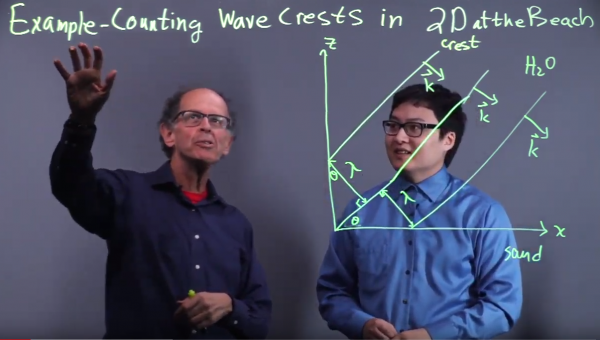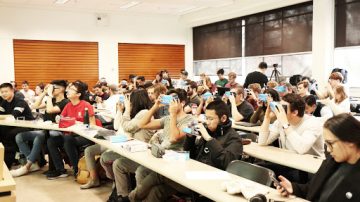Written by Samantha Peng
Feb. 28, 2019
EML faculty-in-residence Dr. Matthew Yedlin taught seismic waves to his POLI 377/APSC 377 class using the Google Cardboard on Nov. 20, 2018.
Why teach students about seismic waves using the Google Cardboard?
Dr. Yedlin explained that seismic waves are principally generated from three sources: earthquakes, underground nuclear tests and underground or quarry mine blasts. He wanted students to see seismic wave movements for themselves.
The class of half arts and half engineering students were able to view a 3D video of a slinky demonstrating the movement of seismic waves in this experience. According to Dr. Yedlin, learning in three dimensions is more intuitive than learning on a two dimensional plane.
“It’s as close to doing the experiment [yourself] as you can. Gives more realism, and hopefully, more intuition about what’s actually happening,” said Dr. Yedlin.
360 physics video a first for UBC Studios and Dr. Yedlin
Dr. Yedlin says it’s the first time a 360 physics video has ever been recorded in UBC Studios.
“[The video] had a pedagogic aspect when I showed the different wave types and it had a production aspect.”
Dr. Yedlin and his team at UBC Studios plans to create a new video with some improvements this summer, like filming with a high resolution camera, filming from different angles, and tying coloured ribbons on the slinky so that Dr. Yedlin can refer to them while teaching his students.
Challenges in using this technology
There’s some usability issues in employing the Google Cardboard in a university classroom. Students had trouble setting up their phone, connecting to YouTube, finding the file, among other complications.
“There’s a whole range of student capabilities and that’s of interest to me,” said Dr. Yedlin.
He has plans to use this technology for other projects involving seniors. The demonstration helped to highlight challenges other audiences may face in using the Google Cardboard.
Though the technology is relatively simple to use, he acknowledges that the Google Cardboard is not commonly in use yet.
“It takes a fair bit of confidence to put your phone into the Cardboard, hold it up, and get it running.”
If you have a Google Cardboard and you’d like to try the experience out yourself, check out Dr. Yedlin and UBC Studio’s YouTube demonstration. If you don’t have a Google Cardboard, you can come to the Emerging Media Lab on Tuesdays from 12-1:30 P.M. to borrow one.

Dr. Yedlin and teaching assistant Sam Ng explaining waves on the UBC Studios light board.

POLI 377/APSC 377 students viewing a seismic wave demonstration in Google Cardboards.